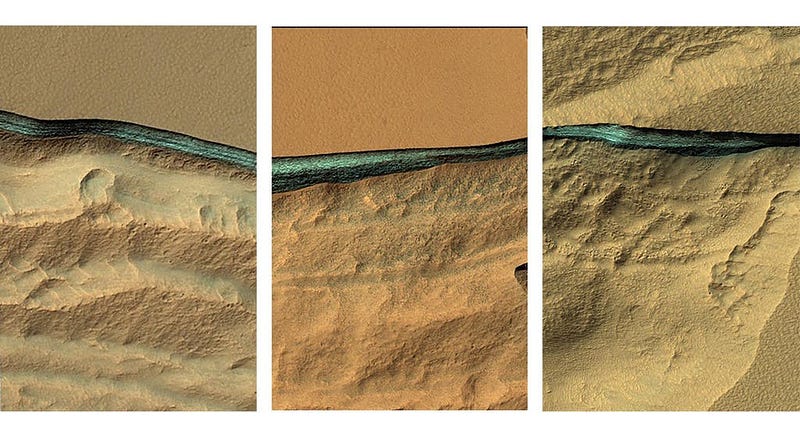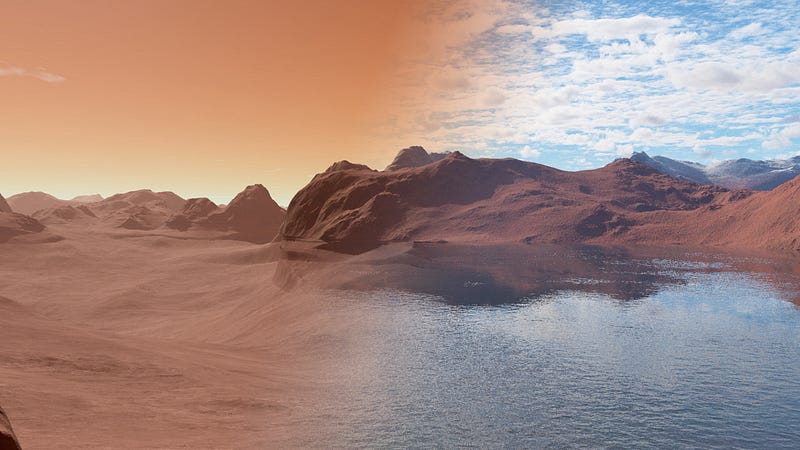Mars: Unraveling the Mysteries of the Red Planet
Written on
Chapter 1: The Wonders of Mars
When observing images of Mars, one cannot help but appreciate its diverse landscape. The intriguing sand dunes and charming spherical pebbles create patterns reminiscent of those on Earth. The rosy sands rise in peaks that appear wave-like yet vast enough to have ensnared some rovers in the Meridiani Plains, ultimately succumbing to relentless sandstorms. The Martian sunsets are cool and pale, casting a soft milky blue hue across the alien sky. While many aspects of Mars evoke familiarity, it also symbolizes our aspirations for the future, igniting the spirit of exploration within us. The red planet, rich in iron oxide, beckons as a potential second home for humanity, raising one of science’s most captivating questions: did Mars ever harbor life?
To sustain life on Earth, three essential elements are required: energy, water, and organic materials (such as hydrogen, carbon, and oxygen). The rovers have harnessed sunlight for energy, which enabled them to uncover organics in the sedimentary rocks at Gale Crater. Their findings confirmed that the Martian soil is alkaline and possesses the nutrients necessary for plant and microbial life. However, the most astonishing characteristic of Mars is its significant water presence.
Substantial ice deposits blanket both poles and persist underground, with some glaciers measuring up to 330 feet (100 meters) thick. These pristine layers lie beneath the surface, almost devoid of debris, hinting at ancient snowstorms akin to modern-day sandstorms. The rovers traverse lake beds and deltas, scrutinizing rocks that suggest a water cycle responsible for sediment and mud deposits. Geological evidence also points to tsunami impacts and the possibility of a former ocean in the northern regions. Moreover, there are signs that rain may have once fallen on Mars. Although most of the water today is frozen or present in the atmosphere, there is still evidence of liquid water on the planet.

In 2018, researchers announced the discovery of an underground lake concealed beneath layers of ice at Mars’s south pole. This briny lake spans 12 miles (20 km) and, while not the typical clear summer lake we know, is nonetheless a significant find. The European Space Agency’s MARSIS instrument detected this water using radar, receiving signals akin to those produced by liquid water beneath ice on Earth. However, due to MARSIS's limited resolution, scientists believe there are more hidden bodies of water waiting to be discovered. The presence of perchlorates, a class of salts that lower water's freezing point, keeps this underground lake in a liquid state.
The existence of liquid water on Mars is critical for sustainability. Evidence from slope lineae and lakes suggests potential aquifers that could yield drinking water, breathable air, and rocket fuel through the splitting of water molecules. It’s also possible that microbial life could thrive in the cold, salty waters, as some microbes on Earth endure even harsher conditions.
Yet, a paradox looms over the ancient Martian landscape.

Despite the compelling evidence of past water systems, no conclusive explanation accounts for how liquid water existed. The prevailing theories about its existence conflict with surface sample findings. While the initial billion years of Mars may have been warm and wet, the sun was only about 60% as hot as it is today. Isotopic ratios suggest a thicker atmosphere that could have trapped more heat, but even that wouldn't have been sufficient to maintain liquid water for extended periods. Current understanding indicates that any oceans would have frozen over in just 4,000 years, and if an ocean existed during Mars's Hesperian period (approximately 2–3 billion years ago), the thin atmosphere would have led to rapid evaporation. Research from the French National Center for Scientific Research argues that if an ocean never existed, sediment deposits could have arisen from groundwater outflows and sudden geological shifts. An even less likely hypothesis involves repeated asteroid impacts thawing a frozen ocean and creating tsunamis.
Moreover, the young Mars lacked enough carbon dioxide to create a greenhouse effect. Mineral analyses from rocks indicate that even with 100 times more carbon dioxide in the atmosphere, it still wouldn’t have been adequate to keep water in liquid form. Bedrock samples show far lower carbonate levels than expected, and despite two decades of research, carbonate deposits remain scant. Models integrating carbon dioxide and hydrogen yield uncertain results regarding their formation and stability. The absence of ice wedges or any signs of freezing at Gale Crater further indicates that the lake there must have been liquid rather than beneath ice.

Currently, scientists are investigating methane to help solve this paradox. Methane, a potent greenhouse gas, could have contributed to warmer temperatures if combined with CO2 and hydrogen in the early Martian atmosphere. Research indicates that this combination may have enhanced radiation absorption, suggesting that methane and hydrogen’s roles have been underestimated. While methane can convert to hydrogen over time, its origins remain a mystery. On Earth, methane is primarily produced by living organisms, raising the tantalizing possibility that microbes could have played a role in creating a warmer Martian climate billions of years ago.
Models propose that global warming on Mars could have resulted from ice thawing triggered by a tilt in the planet's axis, allowing more sunlight to penetrate. Methane trapped in ice could have circulated in the atmosphere for extensive periods, only to be broken down by sunlight, leading to the colder conditions observed today.
With the recent loss of the Opportunity rover, Curiosity remains the sole rover exploring Mars. Its name aptly reflects the intrigue surrounding the planet, which has a history and terrain as intricate as Earth's. From a distance, both planets may seem unremarkable; one a pale blue dot and the other a striking red. However, upon closer examination, one begins to appreciate the tumultuous past of Mars, filled with change, storms, and perhaps even life—an ongoing narrative that intertwines with humanity's future.
Chapter 2: The Martian Potato Paradox
The Martian Potato Paradox explores the enigmatic relationship between water and life on Mars, raising questions about the planet's potential to support life.
This video delves into the paradox of the Martian landscape and what it might mean for the search for extraterrestrial life.
Chapter 3: Mars Bunker: The Fermi Paradox
Mars Bunker: The Fermi Paradox investigates the implications of water evidence on Mars in the context of the Fermi Paradox, further complicating our understanding of life beyond Earth.
This video discusses how the findings on Mars relate to the broader questions about the existence of life in the universe.